First impressions: McConnel’s Agribuggy gets bigger and heavier
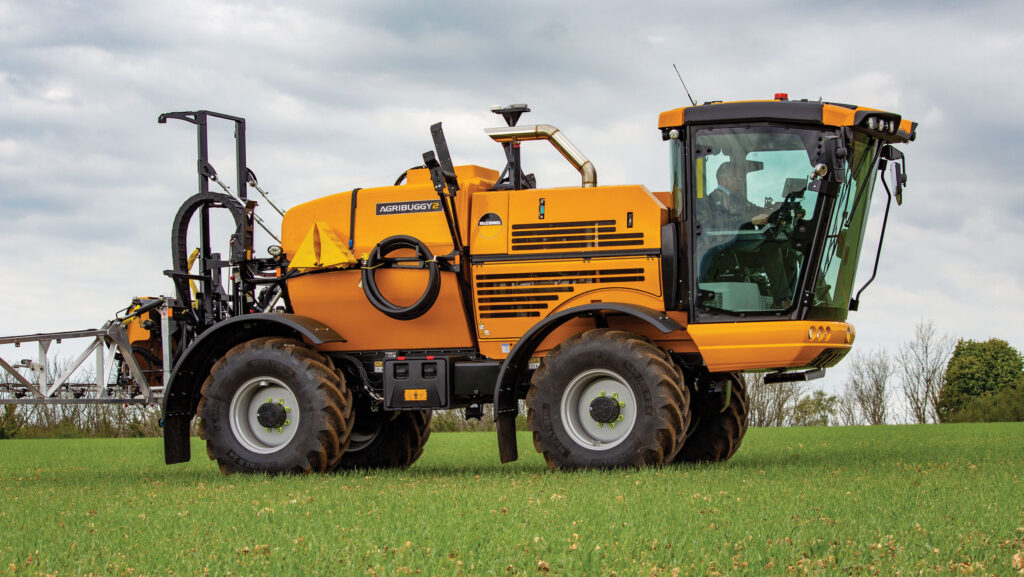 © MAG/Oliver Mark
© MAG/Oliver Mark At what point is a small, lightweight self-propelled sprayer no longer small or lightweight?
The McConnel Agribuggy has defined this relatively niche segment since its inception in the early 1980s but a series of updates have seen it gain almost 2t in 10 years.
The latest iteration, the Lamma-launched V300, accounts for 800kg of that, despite having the same 3m wheelbase as the old AB30 and offering no improvement on its 3,000-litre capacity and 148hp engine output.
See also: Downsized sprayer has plenty of upsides for Cornish contractor
Instead, the extra podge comes from a new hydrostatic transmission – an Agribuggy first – in place of the four-speed mechanical gearbox and a bigger, more conservatory-like cab.
These alterations see it tip 6.4t unladen and near 10t when fully loaded, pushing the threshold for “lightweight” qualification. According to McConnel, this is as big as an Agribuggy will ever get.
However, the growth spurts have meant relinquishing its title of the UK’s lightest self-propelled sprayer.
That prize now goes to Househam’s 6t Spirit 3000, which has the same size spray tank but a fully hydrostatic driveline, slightly longer wheelbase and marginally less power.
Buyers also have the option of the Bateman RB26, with which there’s a marginal weight hit (6,810kg) in return for a bigger 185hp, six-cylinder John Deere engine and the capacity to fit a 36m boom.
Or there’s the lesser-known Grim GSM 3000, imported by Berwickshire-based Merse Agriculture. It weighs about the same as the Bateman and is powered by a 170hp, four-cylinder FPT.
New-look drivetrain
The big news is the change of transmission. The switcheroo marks the first time in its 42-year history that the Agribuggy is without a purely mechanical drivetrain.
Most recently, it was a four-speed automatic with high/low ranges and a drop box to send power to the axles via propshafts.
This was a strong selling point over rival hydrostatics – particularly for farmers working a lot of hilly land.
But McConnel has now joined the masses in opting for a hydrostatic drive, with a big, chassis-mounted pump providing oil to Linde motors on the front and rear axles.
This twin-motor setup, as opposed to having a unit for each wheel, does at least keep things semi-mechanical, as the machine still has proper axles (from Italian firm Omzi), differentials and driveshafts to transfer power to the ground.
According to McConnel, there’s no penalty as far as traction is concerned, in part because there’s still a locking rear differential.
And it has one significant advantage, in that it can handle far more torque.
Output of the 3.8-litre Cummins F-series had to be pegged at a maximum 360Nm on the old model, but the reins have been well and truly loosened this time around, with the engine now topping out at a near-double 600Nm.
It should be almost as economical, too.
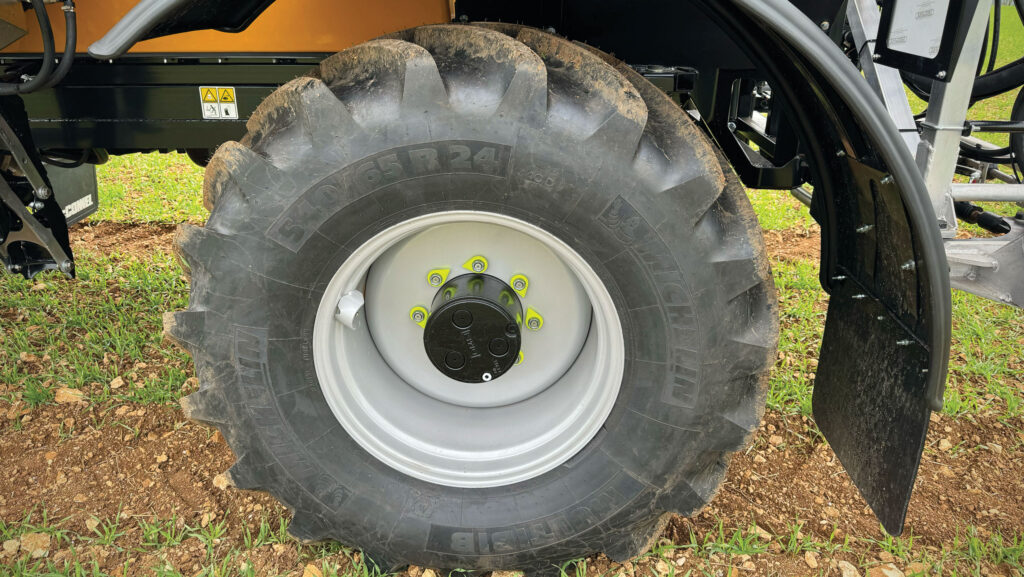
© MAG/Oliver Mark
Standard footwear is a set of Michelin Multibib 540/65 R24 flotations, with 600/60 R28s optional.
Thanks to the transmission change, it’s also now possible to fit row crops up to 42in.
Though these might harm stability, they increase ground clearance to 70cm from the base of the diff housing and will likely be a godsend for anyone desiccating oilseed rape.
Thankfully, McConnel has sorted one of its customers’ biggest grievances – mud splatter caused by undersized fenders.
Guards now loop further around the front of the tyres and rubber flaps dangle at the back, which should stop debris caking the nearside induction hopper and offside storage locker.
Similarly, the pump and plumbing behind the tank is now protected by a smart cover that comes complete with a built-in reversing camera.
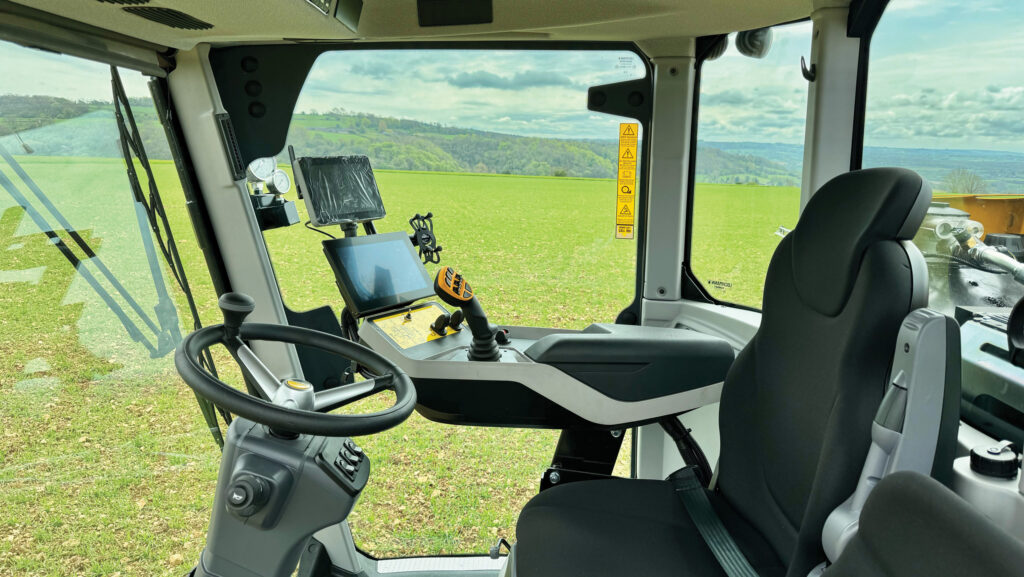
© MAG/Oliver Mark
Italian cab
There’s plenty of Italian DNA in this latest Agribuggy, from the axles to the spray pump and, for the first time, the cab.
Opting for a third-party supplier marks a significant change of tack for McConnel which, until now, had built its cabins in-house.
That eventually proved too labour-intensive and expensive to sustain given the small number of machines it sells, with research and development, safety testing, and filtration approval eating cash before a single machine had exited the factory door.
Much easier and cheaper, then, to get someone else to do the hard work – in this case Lochmann, based close to Italy’s border with Austria.
Its cockpit is shorter and wider than previous generation Agribuggys, which gives operators more usable space, more glazing, and far better views to the boom tips without requiring them to squish beer belly against steering wheel.
The Italians also provide the air-suspended seat and a minimalist armrest, to which McConnel fits its own redesigned joystick and, for the first time, a touchscreen control terminal (8in).
This runs the Shropshire firm’s own software, predominantly for the tractor unit – engine revs, speed, fuel and the like – though it does include section control modules along the bottom.
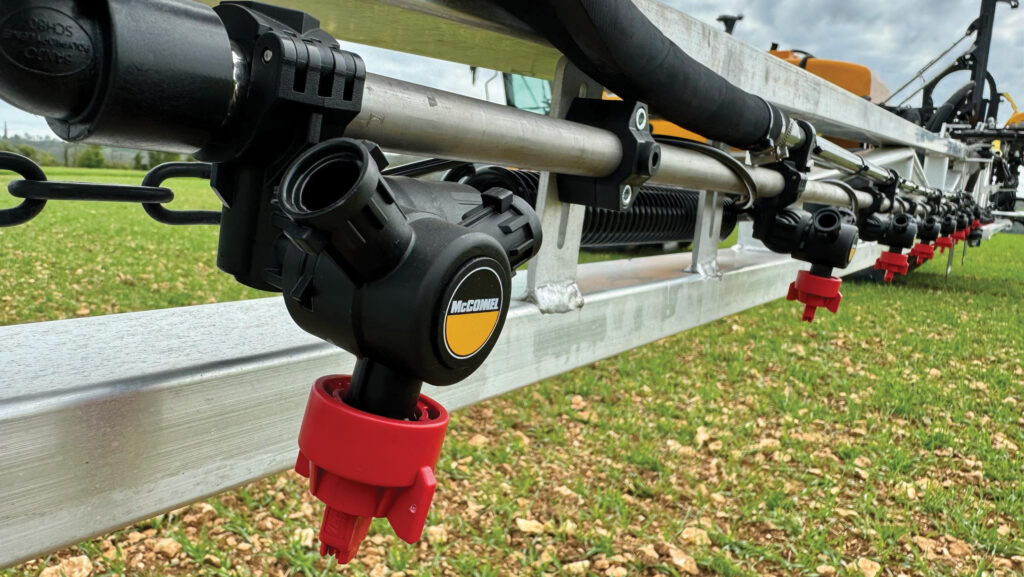
© MAG/Oliver Mark
Any changes to the spray pack?
Not since it was redesigned in 2019 for the AB30, so it carries the same 3,000-litre, internally baffled plastic tank with digital sight gauge.
Control of the spray system remains via a Teejet Matrix 908 universal terminal, which can be paired with any autosteer kit.
The company is currently only offering a 12/24m Pommier aluminium boom, though a 28m version is apparently coming and it’s not ruling out going bigger still.
The limiting factor is the necessity for a twin-fold setup; tri-folds are simply too big and heavy.
The booms carry Teejet triple-nozzle bodies – albeit disguised with McConnel branding – fed by a five-cylinder, 335 litre/min Imovilli pump.
A Ramsay valve regulates the flow, with electrics controlling the master valve and section control air-operated.
Seven sections are standard, but buyers can spec up to 20 or go for Teejet’s DynaJet pulse-width modulation setup for ultra-accurate applications.
Other popular, and cheaper, options include passive boom suspension (£1,000), extra boom lights (£500), and upgrading the 30-litre induction hopper from plastic to stainless steel (£800).
Most buyers opt for the standard manual twin-tap setup, which includes a basic control panel that allows operators to start and stop the pto, alter the engine revs and view the tank fill level.
Electric taps are available for those keen on a bit more sophistication.
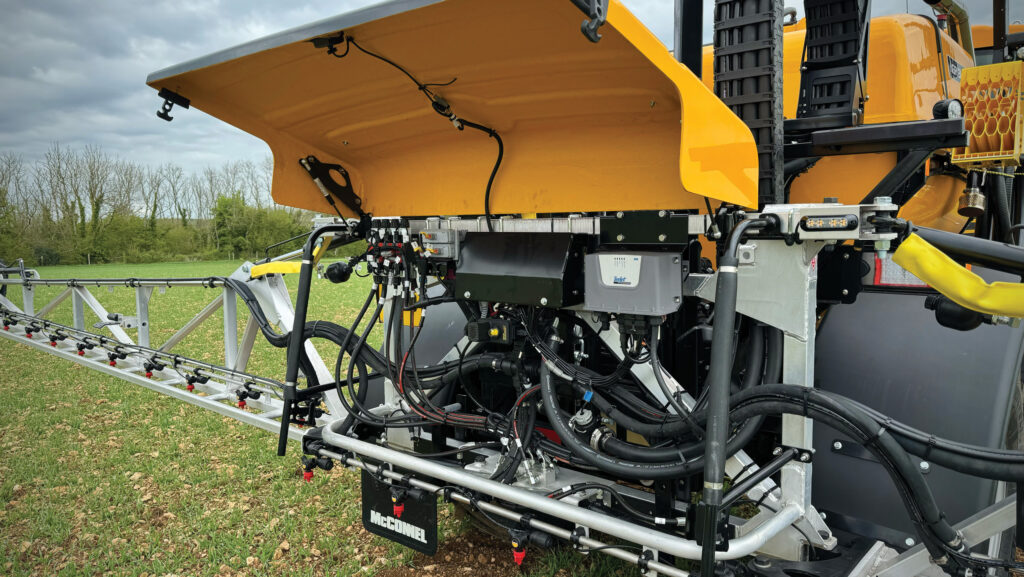
© MAG/Oliver Mark
How much?
By current standards, the £6,000 price rise over the previous model is relatively modest.
That said, it’s still going to cost £220,000 on-farm, which isn’t a whole lot cheaper than something with significantly more capacity.
Small-volume production is expensive – Kellands sold two Agribuggys a month in its pomp, McConnel sold seven last year – and, irrespective of their size, the sprayers still need to be kitted out with plenty of pricey kit.
So, what buyers are really paying for is the longer, or earlier, spraying window that a lightweight sprayer allows – something that could prove valuable in years such as this.
McConnel Agribuggy V300 specifications
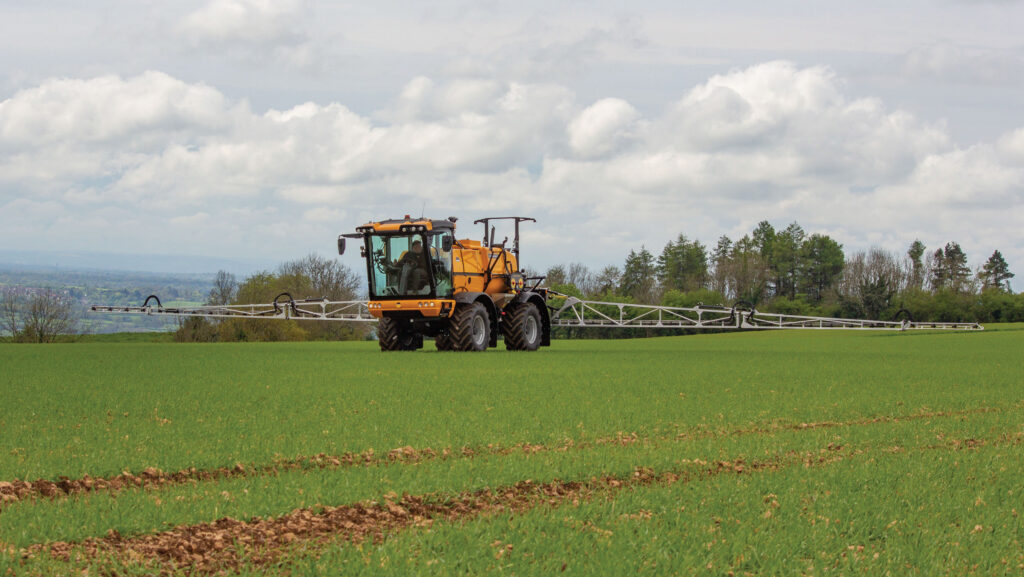
© MAG/Oliver Mark
- Engine 3.8-litre, four-cylinder Cummins
- Power/torque 148hp/600Nm
- Diesel/AdBlue tanks 110 litres/19 litres
- Transmission 50kph hydrostatic
- Wheelbase 3m
- Spray tank 3,000 litres
- Induction hopper 30 litres
- Clean water tank 320 litres
- Pump 335 litres/min Imovilli
- Boom Pommier 12/24m aluminium
- Section shut-off Seven standard, up to 20 optional
- Unladen weight 6,400kg
- Tyres Michelin Multibib 540/65 R24 standard, 600/60 R28 optional
- On-farm price £220,000

